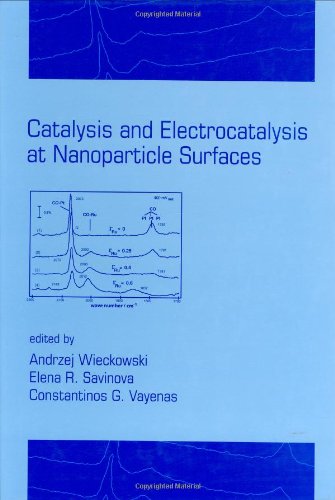

Most ebook files are in PDF format, so you can easily read them using various software such as Foxit Reader or directly on the Google Chrome browser.
Some ebook files are released by publishers in other formats such as .awz, .mobi, .epub, .fb2, etc. You may need to install specific software to read these formats on mobile/PC, such as Calibre.
Please read the tutorial at this link. https://ebooknice.com/page/post?id=faq
We offer FREE conversion to the popular formats you request; however, this may take some time. Therefore, right after payment, please email us, and we will try to provide the service as quickly as possible.
For some exceptional file formats or broken links (if any), please refrain from opening any disputes. Instead, email us first, and we will try to assist within a maximum of 6 hours.
EbookNice Team

Status:
Available4.4
8 reviews
ISBN 10: 0824708792
ISBN 13: 9780824708795
Author: Andrzej Wieckowski, Elena R Savinova, Constantinos G Vayenas
Illustrating developments in electrochemical nanotechnology, heterogeneous catalysis, surface science and theoretical modelling, this reference describes the manipulation, characterization, control, and application of nanoparticles for enhanced catalytic activity and selectivity. It also offers experimental and synthetic strategies in nanoscale surface science. This standard-setting work clariefies several practical methods used to control the size, shape, crystal structure, and composition of nanoparticles; simulate metal-support interactions; predict nanoparticle behavior; enhance catalytic rates in gas phases; and examine catalytic functions on wet and dry surfaces.
1: Theory and Modeling of Catalytic and Electrocatalytic Reactions
2: Simulations of the Reaction Kinetics on Nanometer-Sized Supported Catalyst Particles
3: Electronic Structure and Chemisorption Properties of Supported Metal Clusters: Model Calculations
4: State-of-the-Art Characterization of Single-Crystal Surfaces: A View of Nanostructures
5: Single-Crystal Surfaces as Model Platinum-Based Hydrogen Fuel Cell Electrocatalysts
6: Electrochemical Nanostructuring of Surfaces
7: Adsorption and Reaction at Supported Model Catalysts
8: Size-Dependent Electronic, Structural, and Catalytic Properties of Metal Clusters Supported on Ultrathin Oxide Films
9: Physical and Electrochemical Characterization of Bimetallic Nanoparticle Electrocatalysts
10: Nanomaterials as Precursors for Electrocatalysts
11: Preparation, Characterization, and Properties of Bimetallic Nanoparticles
12: Physicochemical Aspects of Preparation of Carbon-Supported Noble Metal Catalysts
13: NMR Investigations of Heterogeneous and Electrochemical Catalysts
14: In-Situ X-Ray Absorption Spectroscopy of Carbon-Supported Pt and Pt-Alloy Electrocatalysts: Correlation of Electrocatalytic Activity with Particle Size and Alloying
15: STM and Infrared Spectroscopy in Studies of Fuel Cell Model Catalysts: Particle Structure and Reactivity
16: Electrochemical and Chemical Promotion by Alkalis with Metal Films and Nanoparticles
17: Metal-Support Interaction in LowTemperature Fuel Cell Electrocatalysts
18: Effects of Size and Contact Structure of Supported Noble Metal Catalysts in Low-Temperature CO Oxidation
19: Promotion, Electrochemical Promotion, and Metal-Support Interactions: The Unifying Role of Spillover
20: Support Effects on Catalytic Performance of Nanoparticles
21: Abnormal Infrared Effects of Nanometer-Scale Thin Film Material of Platinum Group Metals and Alloys at Electrode-Electrolyte Interfaces
22: Design of Electrocatalysts for Fuel Cells
23: Effects of Particle Size and Support on Some Catalytic Properties of Metallic and Bimetallic Catalysts
24: Conductive Metal-Oxide Nanoparticles on Synthetic Boron-Doped Diamond Surfaces
25: Electrocatalysis with Electron-Conducting Polymers Modified by Noble Metal Nanoparticles
26: Novel Nanostructured Material Based on Transition-Metal Compounds for Electrocatalysis
Tags: Andrzej Wieckowski, Elena R Savinova, Constantinos G Vayenas, Catalysis, Electrocatalysis